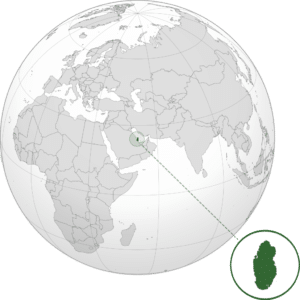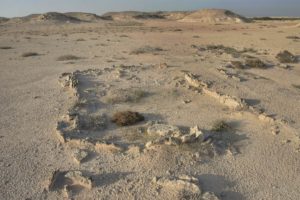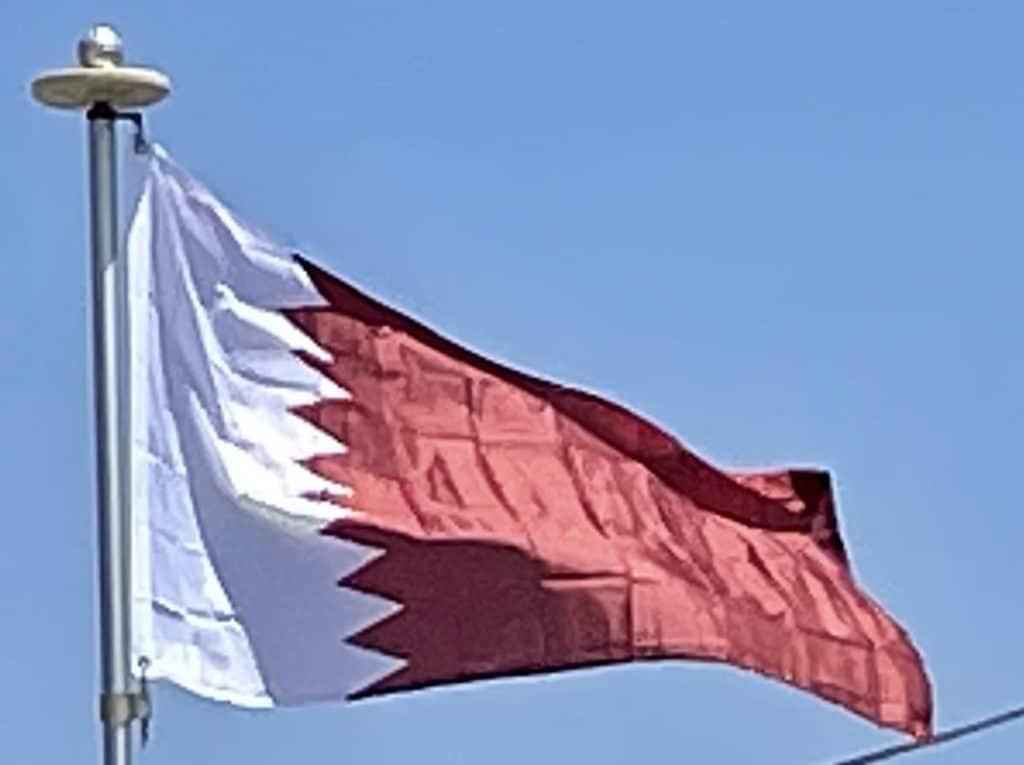Introduction:
Qatar, officially the State of Qatar, is a country located in Western Asia, occupying the small Qatar Peninsula on the northeastern coast of the Arabian Peninsula. Its sole land border is with neighboring Gulf Cooperation Council (GCC) monarchy Saudi Arabia to the south, with the rest of its territory surrounded by the Persian Gulf. The Gulf of Bahrain, an inlet of the Persian Gulf, separates Qatar from nearby Bahrain.
In early 2017, Qatar’s total population was 2.6 million: 313,000 Qatari citizens and 2.3 million expatriates. Islam is the official religion of Qatar. In terms of income, the country has the third-highest GDP (PPP) per capita in the world. Qatar is classified by the UN as a country of very high human development, having the third-highest HDI in the Arab world after United Arab Emirates and Saudi Arabia. Qatar is a World Bank high-income economy, backed by the world’s third-largest natural gas reserves and oil reserves.

Qatar has been ruled by the House of Thani since Mohammed bin Thani signed a treaty with the British in 1868 that recognized its separate status. Following Ottoman rule, Qatar became a British protectorate in the early 20th century until gaining independence in 1971. In 2003, the constitution was overwhelmingly approved in a referendum, with almost 98% in favor. In the 21st century, Qatar emerged as a significant power in the Arab world both through its globally expanding media group, Al Jazeera Media Network, and reportedly supporting several rebel groups financially during the Arab Spring. For its size, Qatar wields disproportionate influence in the world, and has been identified as a middle power.
The FIFA World Cup 2022 will be held in Qatar, making it the first Muslim and Arab country to host the event. The 2030 Asian Games will be held in Qatar.
History:
Antiquity:
Human habitation of Qatar dates back to 50,000 years ago. Settlements and tools dating back to the Stone Age have been unearthed in the peninsula. Mesopotamian artifacts originating from the Ubaid period (c. 6500–3800 BC) have been discovered in abandoned coastal settlements. Al Da’asa, a settlement located on the western coast of Qatar, is the most important Ubaid site in the country and is believed to have accommodated a small seasonal encampment.

Kassite Babylonian material dating back to the second millennium BC found in Al Khor Islands attests to trade relations between the inhabitants of Qatar and the Kassites in modern-day Bahrain. Among the findings were 3,000,000 crushed snail shells and Kassite potsherds. It has been suggested that Qatar is the earliest known site of shellfish dye production, owing to a Kassite purple dye industry which existed on the coast.
In 224 AD, the Sasanian Empire gained control over the territories surrounding the Persian Gulf. Qatar played a role in the commercial activity of the Sasanids, contributing at least two commodities: precious pearls and purple dye. Under the Sasanid reign, many of the inhabitants in Eastern Arabia were introduced to Christianity following the eastward dispersal of the religion by Mesopotamian Christians. Monasteries were constructed and further settlements were founded during this era. During the latter part of the Christian era, Qatar comprised a region known as ‘Beth Qatraye’ (Syriac for “house of the Qataris”). The region was not limited to Qatar; it also included Bahrain, Tarout Island, Al-Khatt, and Al-Hasa.
